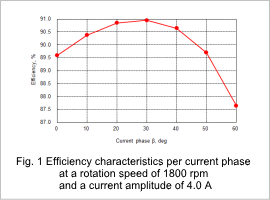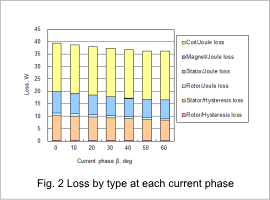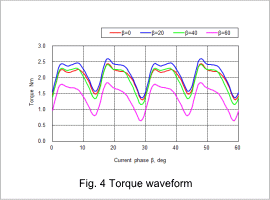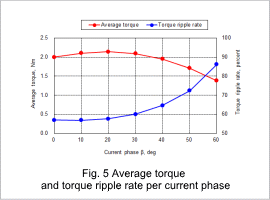Overview
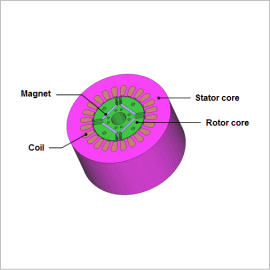
For this reason an IPM motor’s characteristics depend greatly on its rotor geometry, so studies using the magnetic circuit method are difficult. In order to perform an advance design study accurately, an electromagnetic field analysis using the finite element method is necessary.
This Application Note presents the use of magnetic field analysis to obtain the efficiency of an IPM motor in each current phase with a rotation speed of 1800 rpm and the current amplitude of 4.0 A when the motor is driven by sinusoidal wave current.
Efficiency characteristics, loss by type, magnetic flux density distribution, the torque waveform
When the rotation speed is 1800 rpm and the current amplitude is 4.0 A, the efficiency characteristics per current phase are shown in fig. 1, the loss by type is shown in fig. 2, the magnetic flux density distribution is shown in fig. 3, the torque waveform is shown in fig. 4, and the average torque and torque ripple rate are shown in fig. 5. The results of the efficiency characteristics indicate that a maximum efficiency of 91% can be obtained at β = 30 deg. Adjusting the current phase can lower the magnetic flux density of the stator and reduce iron loss. Doing this, however, will reduce the average torque and increase torque ripple, which can lead to noise problems. This means that the current phase needs to be selected while accounting for the size of torque ripples in addition to the degree of efficiency.
Obtaining the efficiency by changing the rotation speed, current value, and current phase within the motor’s range of possible operation makes it possible to create an efficiency map.
